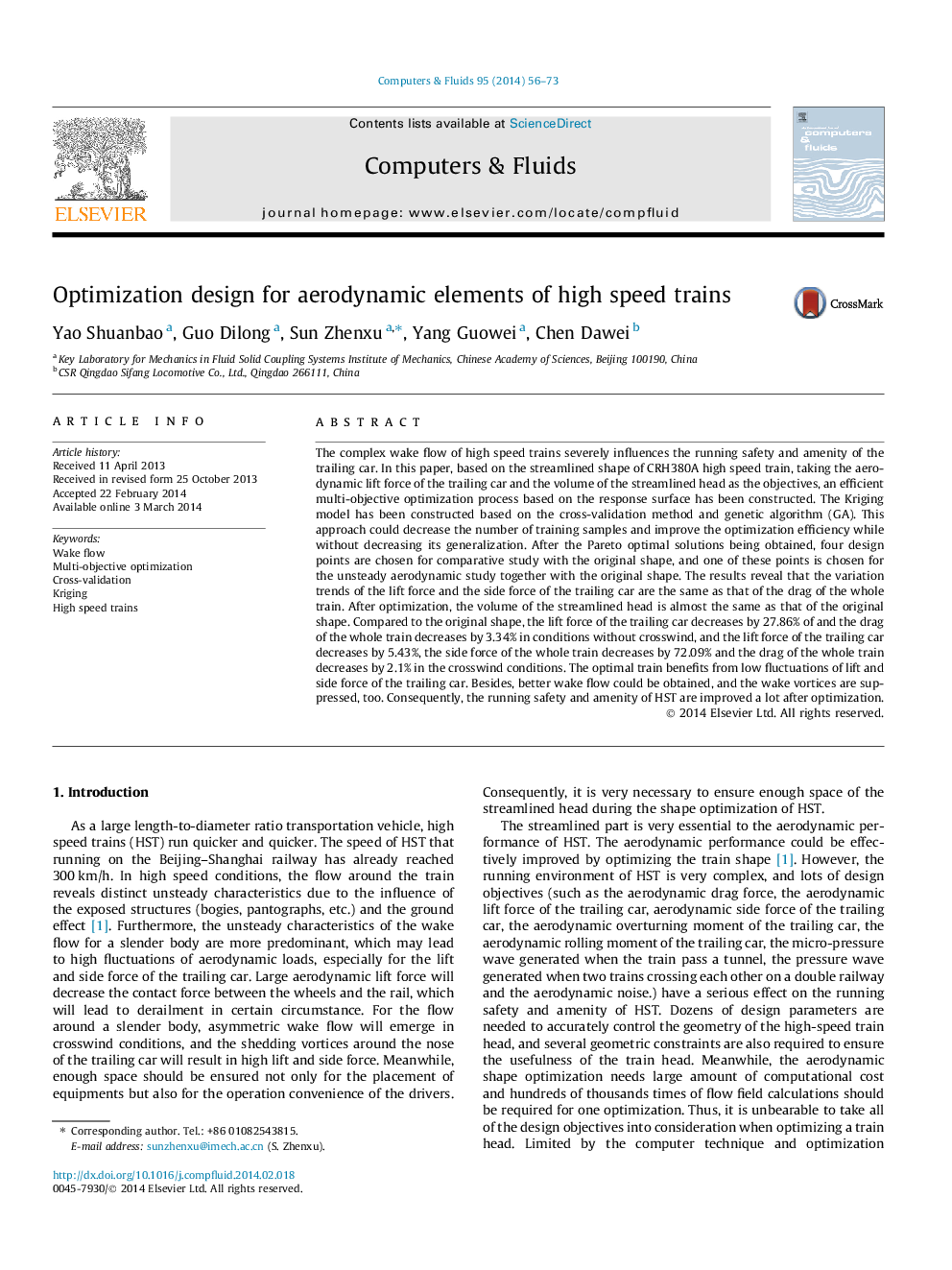| Article ID | Journal | Published Year | Pages | File Type |
|---|---|---|---|---|
| 768399 | Computers & Fluids | 2014 | 18 Pages |
•A multi-objective optimization process based on the response surface is constructed.•The Kriging model is constructed by the combination of cross-validation and GA.•A design point is chosen for the unsteady aerodynamic study.•The optimal train benefits from low fluctuations of lift and side force.
The complex wake flow of high speed trains severely influences the running safety and amenity of the trailing car. In this paper, based on the streamlined shape of CRH380A high speed train, taking the aerodynamic lift force of the trailing car and the volume of the streamlined head as the objectives, an efficient multi-objective optimization process based on the response surface has been constructed. The Kriging model has been constructed based on the cross-validation method and genetic algorithm (GA). This approach could decrease the number of training samples and improve the optimization efficiency while without decreasing its generalization. After the Pareto optimal solutions being obtained, four design points are chosen for comparative study with the original shape, and one of these points is chosen for the unsteady aerodynamic study together with the original shape. The results reveal that the variation trends of the lift force and the side force of the trailing car are the same as that of the drag of the whole train. After optimization, the volume of the streamlined head is almost the same as that of the original shape. Compared to the original shape, the lift force of the trailing car decreases by 27.86% of and the drag of the whole train decreases by 3.34% in conditions without crosswind, and the lift force of the trailing car decreases by 5.43%, the side force of the whole train decreases by 72.09% and the drag of the whole train decreases by 2.1% in the crosswind conditions. The optimal train benefits from low fluctuations of lift and side force of the trailing car. Besides, better wake flow could be obtained, and the wake vortices are suppressed, too. Consequently, the running safety and amenity of HST are improved a lot after optimization.
